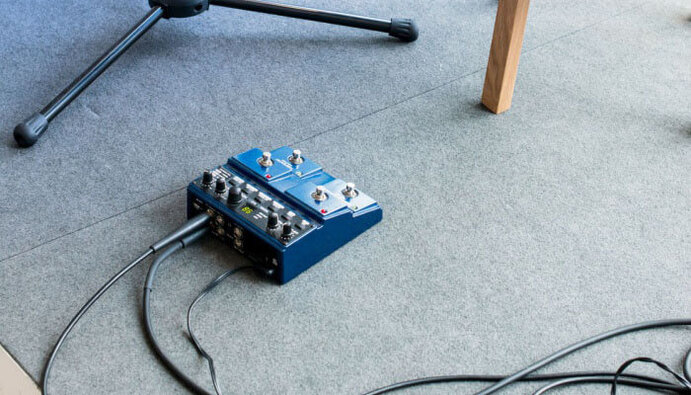|
I got my looper pedal a few years ago and I can say with no reservations that it is one of the best tools there is for improving your playing!
I'm going to explain 3 fundamental applications for the looper pedal... The first application is going to be playing a static chord into your looper then playing different scales/arpeggios over it. This is great ear training and really fun. It can be pretty challenging to get what I call a static, perpetual loop recorded. If it's done well, this will result in a measure or two repeating seamlessly ad infinitum. To achieve this, count 2 or 3 measures in time to firmly establish your tempo before activating your looper pedal. You have to be super precise to get this just right and there will almost certainly be a learning curve. Once you're reasonably good at this, I suggest recording an A5 chord consisting of the 5th string open, 4th string 2nd fret, 3rd string 2nd fret, second string 5th fret and first string 5th fret. Next as that A5 chord is endlessly looping, I'm going to have you play several scales/modes and arpeggios over it. Here they are, play all of them rooted on the A on the 6th string fret 5: A ionian, A dorian, A phrygian, A lydian, A mixolydian, A aeolian, A locrain, A major blues, A minor blues, A major 7 arpeggio, A minor 7 arpeggio and A7 arpeggio. Record a static A7 chord onto looper and play A major and minor blues scales over it and the following arpeggios: A7, A9, A11, A13 and Am7. Also play the dorian, mixolydian and diminished scales. Record a static A chord and play the follow over it: A major, lydian, mixolydian and major blues scales and Amaj7 and A7 arpeggios. Second, you can record what I call a “back to back chord progression”. This is when you play a chord progression that repeats as soon as it ends. A couple of favorites of mine to do with students are: 12 bar blues and some common 4 chord progressions. (for example: I – iii – IV – V or I – vi – ii – V) You can experiment with playing different scales and arpeggios over the progression. Also, take the same approach and apply it to a 12 bar blues. Finally, you can use the looper pedal to become more proficient at another instrument. For example, if you're primarily a guitarist, add a bass track to all of your loops to get more practice at playing and thinking like a bass player and do the reverse if you're mainly a bassist. One bonus piece of advice: when recording on your looper, don't use a metronome/drum beat/click track. You can use your time with the looper to also work on your ability to maintain a steady tempo which is actually much harder than most people realize and vitally important! |
AuthorEric Hankinson Archives
December 2023
Categories
All
|
|
The Chromatic Watch Company
(my other business) |
|


 RSS Feed
RSS Feed

